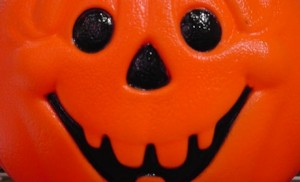It’s time for little monsters to knock at your doors! While Halloween is a time for fun and treats, certain dangers abound. The key to keeping kids safe this year, and every year, is close parental supervision and a few trick-or-treat precautions. Doctors at the Comprehensive Children’s Injury Center at Cincinnati Children’s Hospital Medical Center and experts in the Drug and Poison Information Center offer these tips to make this year’s holiday a safe one.
Costumes
- Avoid potential burn injuries: Look for flame-resistant materials for costumes and be particularly aware of open flames in Jack O’ Lanterns
- Choose costumes that do not have sharp objects attached to masks or itself
- Beware of costumes made with flimsy materials and outfits with big baggy sleeves or billowing skirts.
- Make sure masks allow for full vision
- If your child wears a hat or scarf, make sure it fits securely and provides adequate ventilation
- Apply non-toxic face paint or cosmetics as an alternative to masks
- Make sure children wear properly fitting shoes
- Plan costumes of highly visible colors
- Adhere reflective tape or stickers to costumes or treat bags or have the child wear a reflective bracelet
- Attach each child’s name, address and phone number to their clothes in case they become separated from adults
Trick-or-treating
The most important thing to remember is to make children visible to automobile drivers. A child is four times more likely to be hit and killed by a car on Halloween than any other time.
- Give kids flashlights to carry
- Accompany children under age 10
- Allow children to travel only in familiar areas
- Remind children to follow rules of crossing streets – only cross at corners and crosswalks, look left, right and left again when crossing and keep looking as you cross
- For people who are giving out treats, healthy food alternatives for trick-or-treaters include packages of low-fat crackers with cheese, single-serve boxes of cereal, packaged fruit rolls, mini boxes of raisins and single-serve packets of low-fat popcorn
- Non-food treats may include plastic rings, pencils, stickers, erasers and coins
- Battery powered jack o’lantern candles are preferable to a real flame. If adults who are passing out treats do use candles, place the pumpkin well away from where trick-or-treaters will be walking or standing
Candy
- Feed kids a good meal before trick-or-treating so they don’t get cranky or hungry half-way through
- Do not allow children to eat any treats until they’ve been sorted and checked by an adult at home
- Throw candy away if it appears to have been unwrapped and re-wrapped, or appears suspicious in any way
- Do not allow young children to have any items that are small enough to present a choking hazard or that have small parts or components that could separate during use
- If you have any questions or concerns regarding your child’s candy, please call 1-800-222-1222, and the national hotline will connect you to your local poison center.
Children’s Fears
Halloween can sometimes be a frightening holiday for children. To help ease the fright of “monsters” and unfamiliar sights, parents should help their children interpret Halloween as a make-believe situation. Show children that someone is just wearing a mask by asking that person to remove it. Parents should also have small children try on their costumes before Halloween. This exercise will give them time to get used to how they look.





